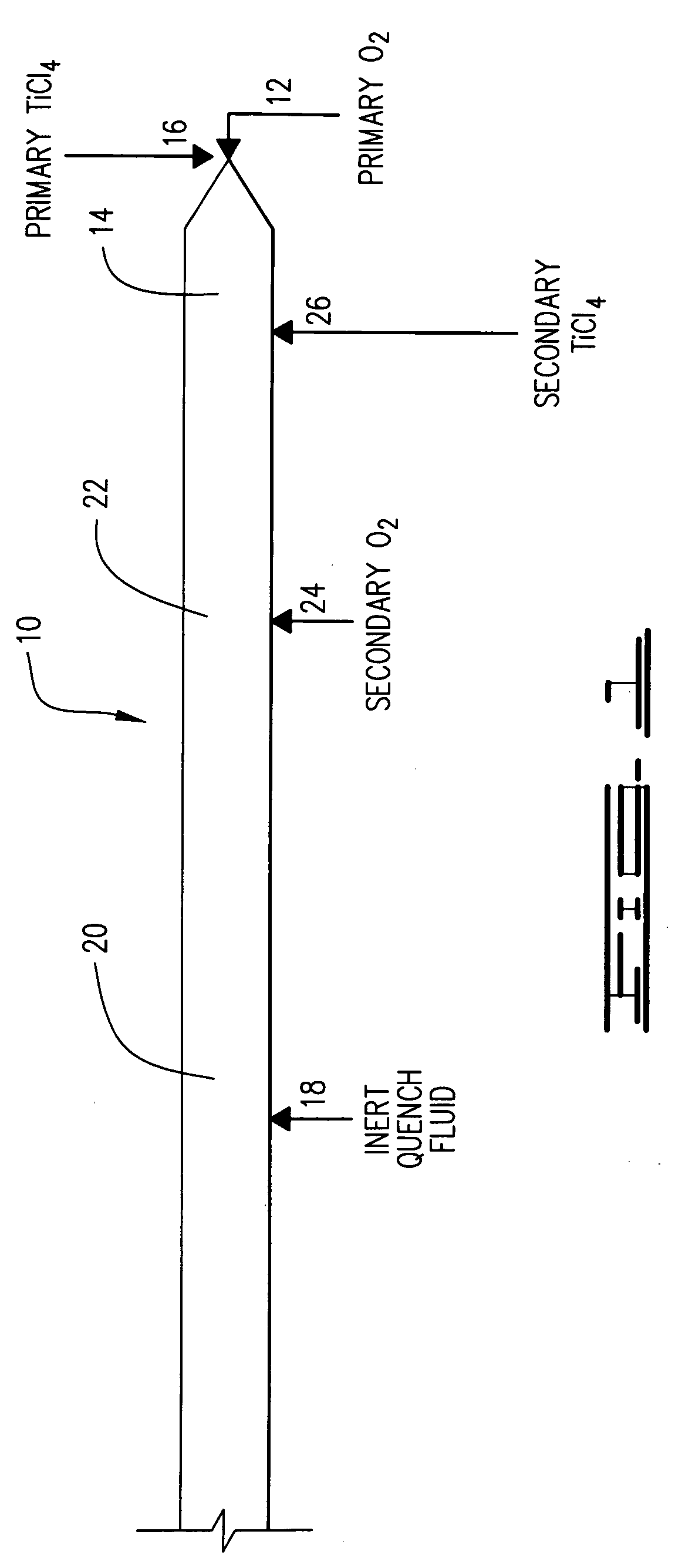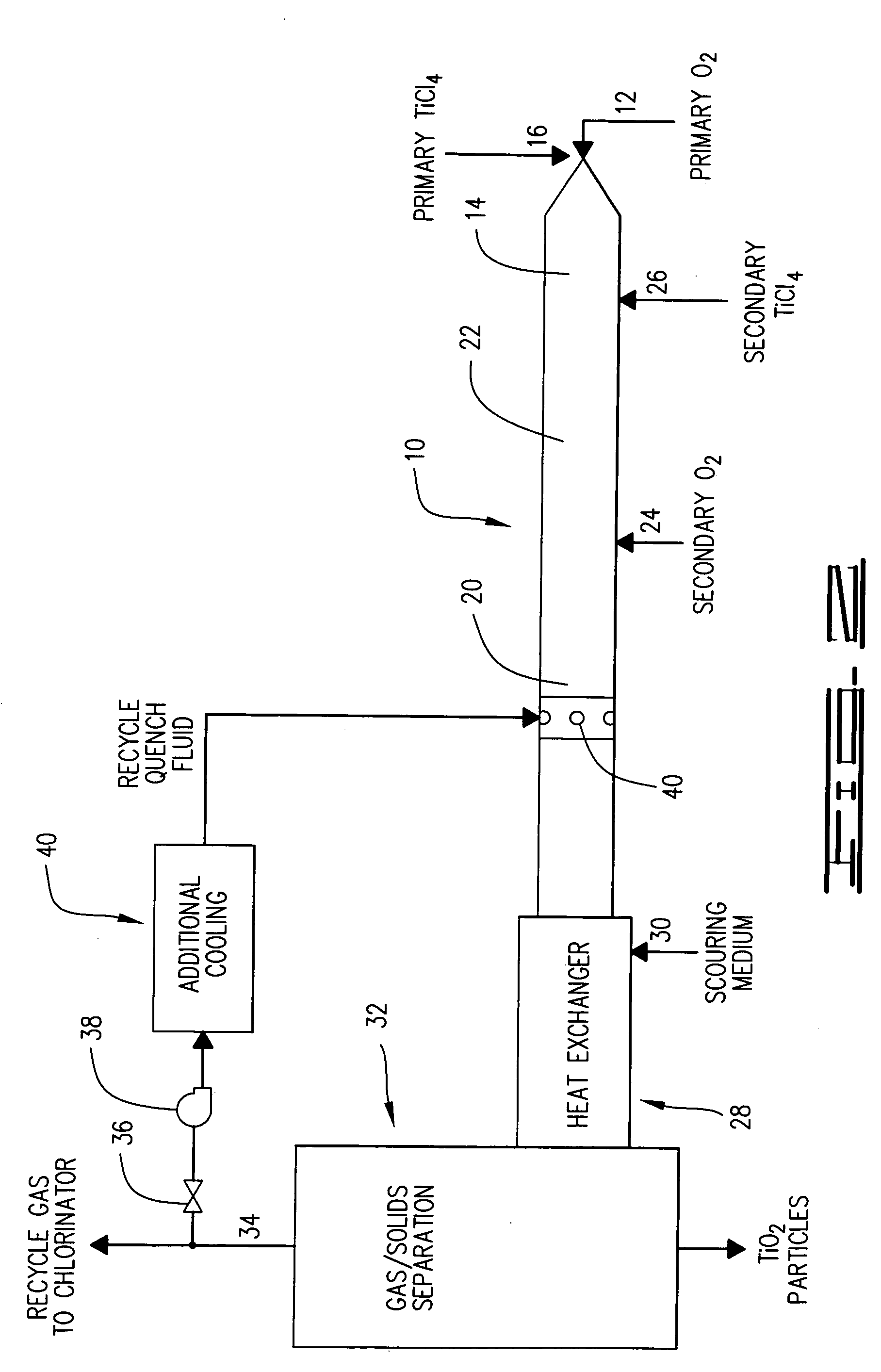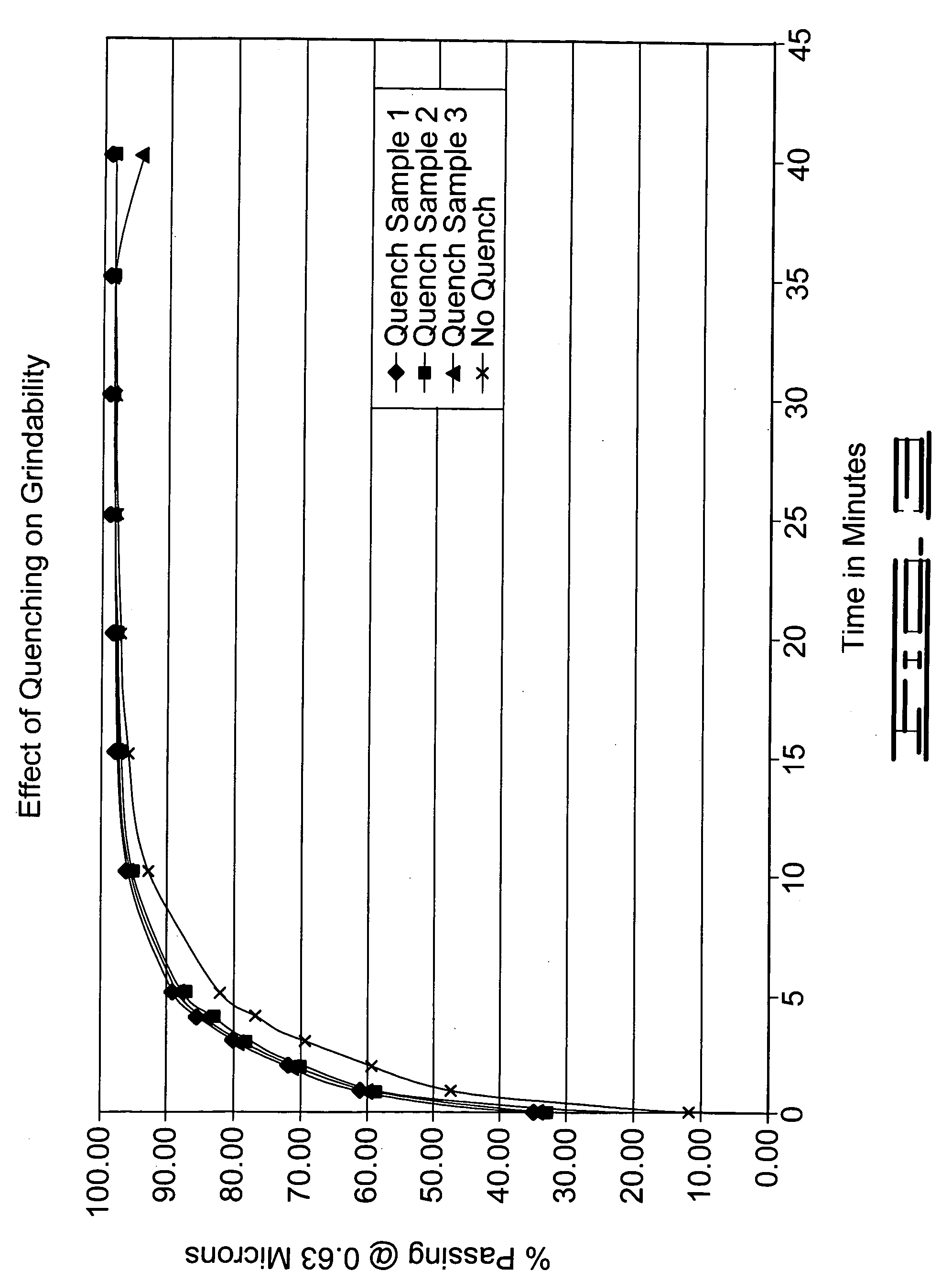Process for improving raw pigment grindability
a titanium dioxide pigment and oxidation process technology, applied in the direction of pigmenting treatment, inorganic chemistry, chemistry apparatus and processes, etc., can solve the problems of inability to achieve total inability to complete primary particle surface coverage, and inability to continue to form and strengthen aggregates, etc., to achieve significant improvement in the grinding ability of titanium dioxide agglomerates produced
- Summary
- Abstract
- Description
- Claims
- Application Information
AI Technical Summary
Benefits of technology
Problems solved by technology
Method used
Image
Examples
example 1
[0047] A pilot quench test was run on a single burner line where a portion of the gaseous reaction products, having cooled to 125° F., were recycled and injected back into the reactor at a pressure of less than 5 psig above the reactor pressure at the point of injection. Two recycle gas injection nozzles were located in the reactor about 33.7 feet downstream of the primary titanium tetrachloride slot. The volume of gas recycled represented about 25% of the total gas flow in the reactor. Samples were taken of the raw pigment produced using the recycle gas quench and compared to samples taken prior to addition of the quench.
[0048] The degree of agglomeration can be estimated from sieve analyses of the percent passing 0.63 micrometer. Particles having diameters greater than 0.63 micrometer are considered agglomerated. The samples of raw pigment were sand-milled in the laboratory using silica sand. Table 1 below compares the raw pigment milling time required, in minutes, to achieve 95%...
example 2
[0049] Raw pigment samples from the pilot test described above were sand-milled in the laboratory using zircon sand. FIG. 3 shows the sieve analyses over time for test samples. Without milling, the unquenched raw pigment was about 90% agglomerated compared to the quenched samples which were about 65% agglomerated. As can be seen, the grindability of raw titanium dioxide produced using the additional quench step is consistently improved over the grindability of raw titanium dioxide produced without the quench step.
example 3
[0050] A second pilot quench test was run on a single burner line where a portion of the gaseous reaction products, having cooled to about 130° F., were again recycled and injected back into the reactor. In this test two recycle gas injection nozzles were located in the reactor about 26.2 feet downstream of the primary titanium tetrachloride slot. The volume of gas recycled was increased to about 40% of the total gas flow in the reactor. Samples were taken of the raw pigment produced using the recycle gas quench and compared to samples taken prior to addition of the quench.
[0051] The samples of raw pigment were sand-milled in the laboratory using zirconia grinding media rather that silica sand. Zirconia media provides faster and more reliable grind tests. Table 2 below compares the raw pigment laboratory milling time required, in minutes, to achieve 95% passing 0.63 micrometer. A comparison of the laboratory milling times shows that quenching at this position and under the above de...
PUM
 Login to View More
Login to View More Abstract
Description
Claims
Application Information
 Login to View More
Login to View More - R&D
- Intellectual Property
- Life Sciences
- Materials
- Tech Scout
- Unparalleled Data Quality
- Higher Quality Content
- 60% Fewer Hallucinations
Browse by: Latest US Patents, China's latest patents, Technical Efficacy Thesaurus, Application Domain, Technology Topic, Popular Technical Reports.
© 2025 PatSnap. All rights reserved.Legal|Privacy policy|Modern Slavery Act Transparency Statement|Sitemap|About US| Contact US: help@patsnap.com



